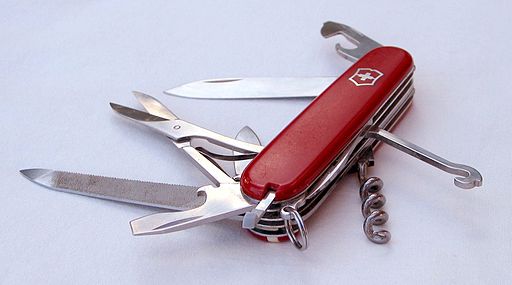When to heed usability-flexibility tradeoffs
I recently moved from the Twin Cities to Philadelphia, and luckily, I bought myself a GPS device beforehand. I’m glad I did, because it prevented me from getting lost while traveling and driving around the East Coast. Sure, I could just use a GPS app on a smartphone for the same purpose. But I prefer to use an actual GPS device. If you asked me why, I’d say the main reason has to do with usability-flexibility tradeoffs.

What are usability-flexibility tradeoffs?
There’s a dream idea when it comes to designing technologies like smartphones. It’s the idea that we can design a multipurpose device to perform practically any task. Take mobile apps, for example. Nowadays, there seems to be an app for almost anything and everything under the sun. One of the most common phrases I hear is, “There’s an app for that!”
It’s an attractive idea (as long as you’re not driven crazy by all the digital clutter from too many apps). But it also presents a big problem: what the user experience (UX) profession calls usability-flexibility tradeoffs.
Simply put, a usability-flexibility tradeoff means that the more flexible and multifunctional our technology gets, the less useful and usable it will be for accomplishing a particular task. In other words, more flexibility often entails less usability, and vice versa.
Specialized technology vs. multipurpose technology
For instance, we can see this tradeoff play out when we compare specialized technology to multipurpose technology. To return to my previous example, there’s a reason I prefer to use a GPS device (a specialized technology) rather than a GPS app on my phone (a multipurpose technology). The actual GPS device performs better, and it does so for several reasons. To name just a few:
- GPS apps on smartphones may quickly lose their location due to weak signals or bad network connections.
- Sometimes GPS apps won’t work due to software issues, like pending updates that need to be installed on your phone.
- GPS apps can easily get interrupted by phone calls, text messages, notifications, or even advertisements. These interruptions can be dangerous, given that they’re significant causes of distracted driving.

For the same reason, most of us prefer to use a real knife, rather than a Swiss Army knife, while working in the kitchen. A Swiss Army knife is multifunctional, in that it has a variety of tools and applications that increase its flexibility of use. Not bad, right? Indeed, the Swiss Army knife is quite convenient in that regard.

Why do usability-flexibility tradeoffs happen?
In Universal Principles of Design, authors William Lidwell, Kritina Holden, and Jill Butler explain why usability-flexibility tradeoffs happen. To design a flexible device with a wide range of applications, you’ll have to design it using a large set of multifunctional requirements.
However, those requirements may conflict with one another, perhaps in unpredictable ways. Therefore, you’ll likely have to factor in all kinds of compromises between those requirements. And those compromises will probably result in decreased performance of all the applications. In such cases, usability is traded off for flexibility.
When trading off usability for flexibility makes sense
Now, in some cases, trading off usability for flexibility may make sense. Take another common example: phones with built-in cameras. Most of us are not professional photographers, so the built-in cameras on our phones usually take pictures that are good enough, at least for most everyday situations. (Regardless, I wouldn’t recommend using a phone camera for special occasions, like wedding photos, instead of a photographer with a professional camera.)
So, there are cases when usability-flexibility tradeoffs are worth it: when the value of flexibility outweighs the value of usability. The trick is figuring out when you need more flexibility or more usability for the task you want to accomplish. Either way, always keep this key insight in mind: Usability-flexibility tradeoffs let us know that just because we can design technology to become a jack of all trades, it may still end up being a master of none!